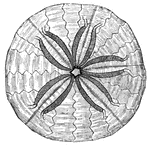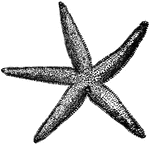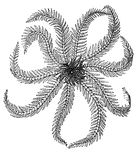
Crinoid
Crinoids are Echinoderms. They are distinguished by the fact that they are fixed, during the whole or…

Crinoid
Crinoids are Echinoderms. They are distinguished by the fact that they are fixed, during the whole or…
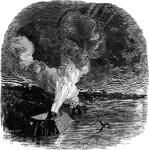
Siege of Island
"Siege of Island No. 10, on the Mississippi River- night bombardment by the Federal mortar boats, ten…

Attack at Harrisonburg
"Gallant attack by 150 of the Pennsylvania Bucktails, led by Colonel Kane, upon a portion of General…

Battle of Gaines's Mill
"Battle of Gaines's Mill, Friday, June 27th, 1862. At eleven o'clock each division, brigade, regiment…

Battle of White Oak Swamp Bridge
"Battle of White Oak Swamp Bridge, Monday June 30th, 1862- Ayres's, Mott's and Randall's batteries checking…

Oven
"'Fresh Bread!'- Impromptu oven built by the Nineteenth Regiment, New York Volunteers, in General Banks's…
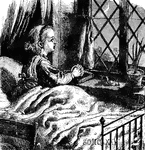
Twinkle, Twinkle, Little Star
Twinkle, twinkle, little star. How I wonder what you are! Up above the world so high. Like a diamond…

Banks Expedition
"The Banks Expedition- scene on the hurricane deck of the United States transport North Star-…

Fort Hindman
"The investment of Fort Hindman, Arkansas Post, Ark., by the Federal troops under General McClernand,…
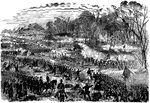
Battle of Champion Hills
"Battle of Champion Hills, May 16th, 1863- the formidable position of General Pemberton carried by Generals…
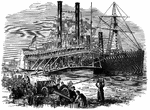
Banks Expedition
"The Banks Expedition- scene on the levee, Baton Rouge, La. Contrabands unloading military stores from…

Battle of Chickamauga
"Battle of Chickamauga, Ga., September 19th-20th, 1863, between Generals Rosecrans and Bragg. Our sketch…

War in Virginia
"The war in Virginia. General Butler's lines south of the James, Va., with troops in position near the…

Comparative view of the size of the eggs of different animals
1, Epyornis; 2, Ostrich; 3, Cassoway; 4, Wild Goose; 5, hen; 6, Pigeon; 7, Humming-bird; 8, Eagle; 9,…
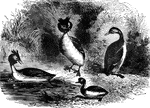
Grebes
Expert swimmers, grebes hunt fish, frogs, crustaceans, and insects in both salt and fresh water.

Wood-terrapin
Sometimes referred to as the fresh-water terrapin, the wood-terrapin ranges from Canada to Pennsylvania.
Stickleback
"Three inches long, is found in both salt and fresh water. It so abounds in the sluggish steams and…

Common Mackerel
"Eaten both fresh and salted, and is caught in immense numbers in Europe and America. It is fourteen…
Shanny
"A very curious species, five sinches long, remarkable for creeping out of the water with their pectoral…
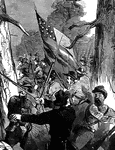
Attack at Harrisonburg
"Gallant attack by 150 of the Pennsylvania Bucktails, led by Colonel Kane, upon a portion of General…
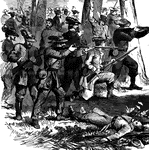
Attack at Harrisonburg
"Gallant attack by 150 of the Pennsylvania Bucktails, led by Colonel Kane, upon a portion of General…

Attack at Harrisonburg
"Gallant attack by 150 of the Pennsylvania Bucktails, led by Colonel Kane, upon a portion of General…
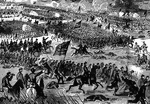
Battle of Champion Hills
"Battle of Champion Hills, May 16th, 1863- the formidable position of General Pemberton carried by Generals…

Battle of Champion Hills
"Battle of Champion Hills, May 16th, 1863- the formidable position of General Pemberton carried by Generals…
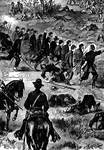
Battle of Champion Hills
"Battle of Champion Hills, May 16th, 1863- the formidable position of General Pemberton carried by Generals…
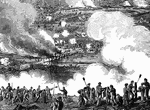
Battle of White Oak Swamp Bridge
"Battle of White Oak Swamp Bridge, Monday June 30th, 1862- Ayres's, Mott's and Randall's batteries checking…

Battle of White Oak Swamp Bridge
"Battle of White Oak Swamp Bridge, Monday June 30th, 1862- Ayres's, Mott's and Randall's batteries checking…
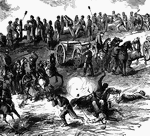
Battle of White Oak Swamp Bridge
"Battle of White Oak Swamp Bridge, Monday June 30th, 1862- Ayres's, Mott's and Randall's batteries checking…
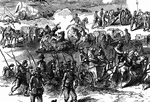
Battle of White Oak Swamp Bridge
"Battle of White Oak Swamp Bridge, Monday June 30th, 1862- Ayres's, Mott's and Randall's batteries checking…
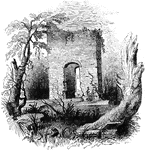
Jamestown Ruins
"Ruins at Jamestown. This view is from the old church-yard, looking toward James River, a glimpse of…

Apple Shell
"The species are numerous, and are chiefly found in the fresh waters of tropical and subtropical countries,…

Aquarius
"A zodiacal constellation, supposed to represnt a man standing with his left hand extended upward, and…

Aquila
"A northern constellation situated in the Milky Way, nearly south of Lyra, and containing the bright…

Processionary Caterpillars
"If the guide stops a moment all the followers halt; if he continues the route, they all hasten after…
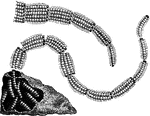
Processionary Caterpillars
"If the guide stops a moment all the followers halt; if he continues the route, they all hasten after…

Underside of a starfish
"The organs of motion are similar, consisting of a multitude of small feet called ambulacra,…

Carp
"Carp is a fresh-water fish. It is a native of Asia, but has been extensively introduced into the United…
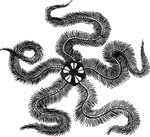
Common brittle-star
Among the several species of Brittle-Star found in the British seas is the Common Brittle-Star, Ophicoma…
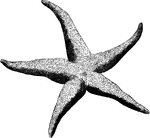
Five-fingered jack
"In this family the arms appear to be merely prolongations of the disc; they are suaully five in number,…

Common European sea-star
"The colors in this are variable but brilliant - red, purple, green, and white. It measures from nine…
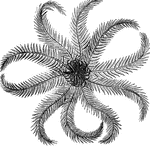
Rosy feather-star
"The body is flattened and covered with several cacareous plates; the lower, or entral surface, bears…
!["The largest diamond ever found in Brazil weighed 254 and a half carats, and was discovered in 1853 by a [African-American] in the river Bogageno; it is known as the "Star of the South." It was sold to the Gaekwar of Baroda for $450,000."—(Charles Leonard-Stuart, 1911)](https://etc.usf.edu/clipart/15100/15121/starsouth_15121_mth.gif)
Star of the South Diamond
"The largest diamond ever found in Brazil weighed 254 and a half carats, and was discovered in 1853…

Fresco Ceiling
"A Fresco is a kind of painting performed on fresh plaster, or on a wall covered with mortar not quite…

Grayling
"The Grayling is a genus of fresh-water fishes in the salmon family, distinguished from trout, etc.,…
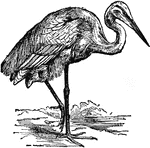
Heron
"Heron is the common name of birds of the genus Ardea. The herons are distinguished by having a long…

Common River Trout
"Trout is a term applied generally to various species of fishes belonging to the salmon family. The…

Daphnia Pulex Water Flea
"Water Flea is a popular name for minute aquatic Crustaceans such as daphnia, cypris, and cyclops. The…
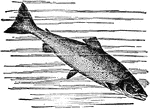
Salmon
"The Salmon is a well-known fish, inhabiting both salt and fresh waters, and ranking prominent among…
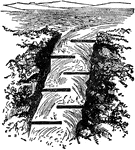
Salmon Ladder
"The Salmon is a well-known fish, inhabiting both salt and fresh waters, and ranking prominent among…

Shad
"Shad is the popular name of three anadromous fishes of the genus Clupea: (1) The allice or European…


